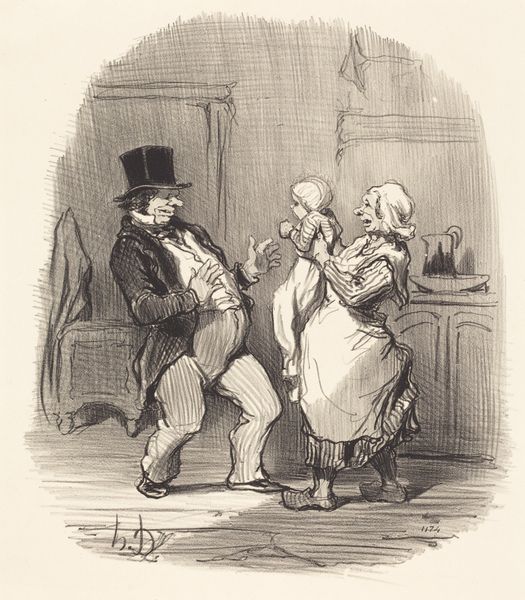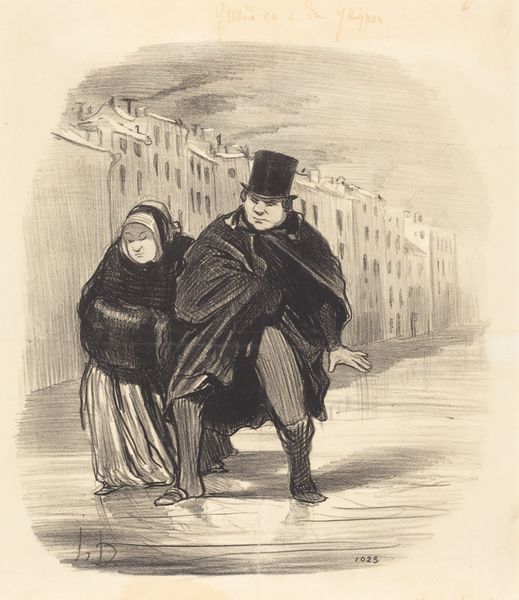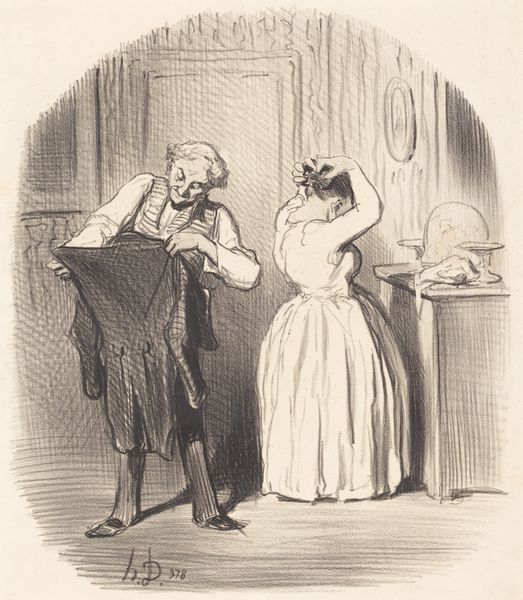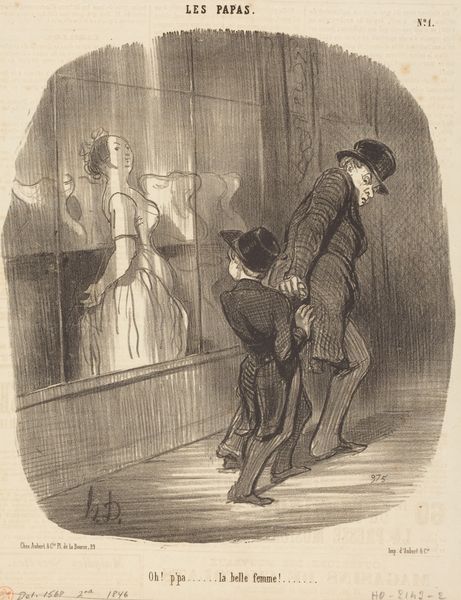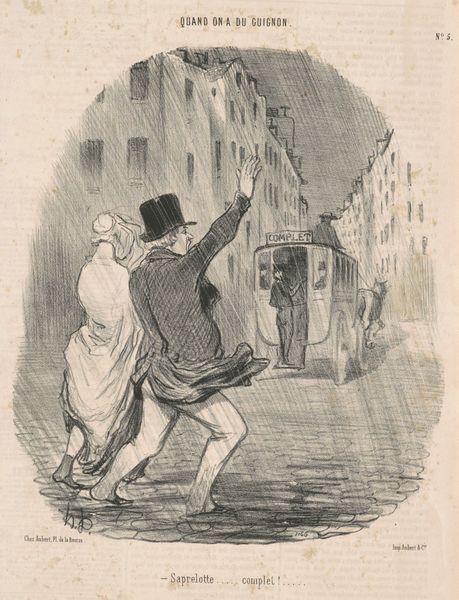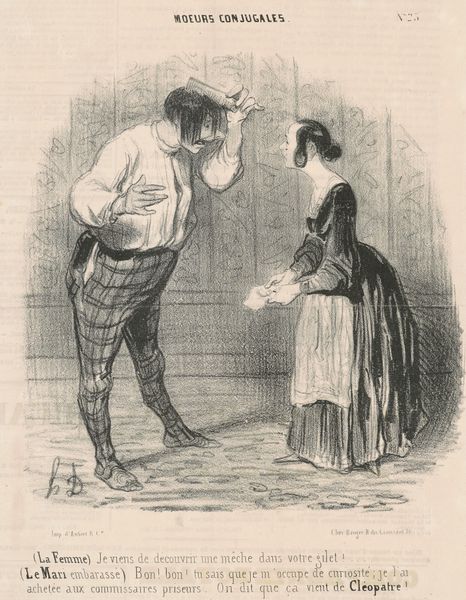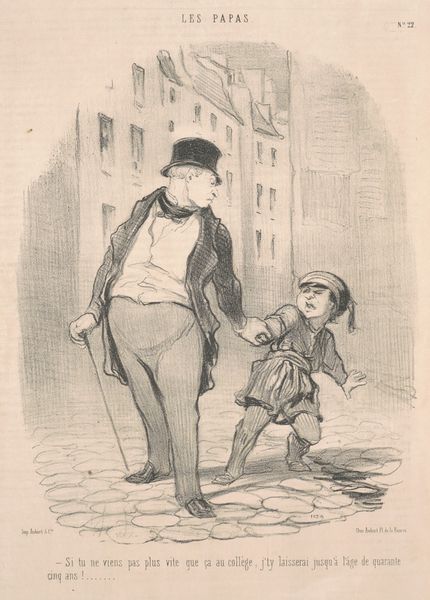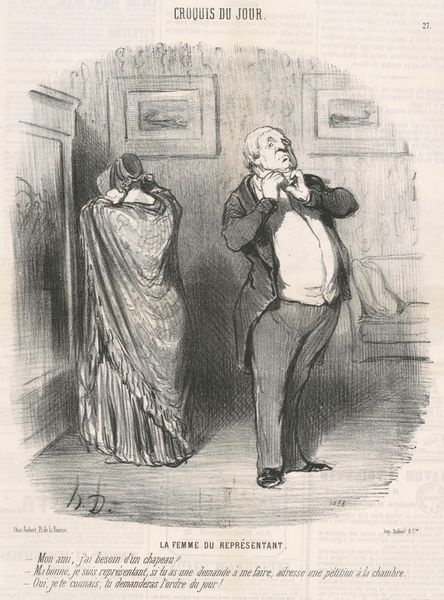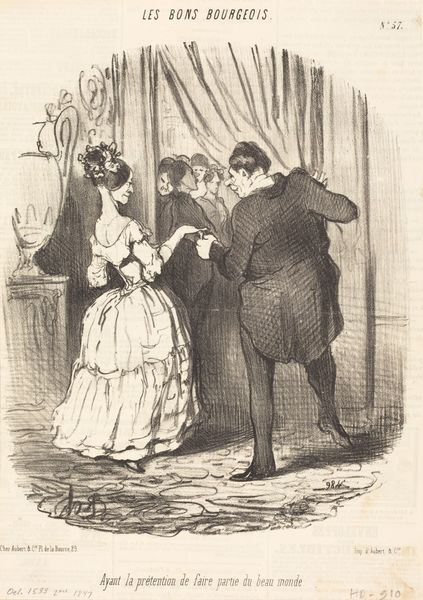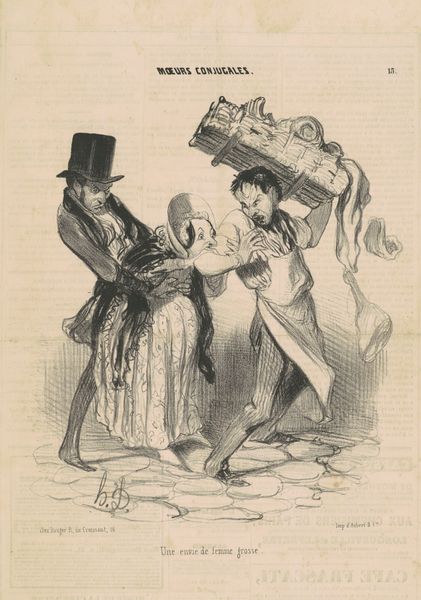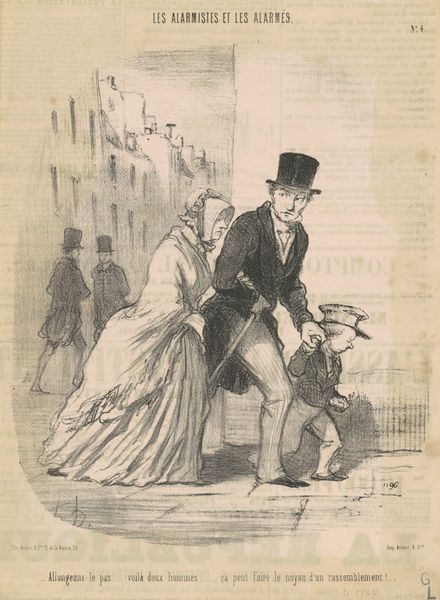
drawing, lithograph, print, pencil
#
portrait
#
drawing
#
lithograph
# print
#
caricature
#
pencil sketch
#
character sketch
#
romanticism
#
pencil
#
genre-painting
Copyright: National Gallery of Art: CC0 1.0
Curator: This is Honoré Daumier’s lithograph titled “Non, madame, je ne vous quitterai pas…” created in 1848. What's your first impression? Editor: I'm struck by the way the sketch emphasizes the power dynamics between these two figures—a sense of looming entitlement emanates from the male figure, his shadow seemingly engulfing the woman. Curator: Absolutely. Observe Daumier's mastery of line. The hatching and cross-hatching build form and texture, directing the viewer's eye to the man's determined, almost predatory, posture and the woman’s resistant, though perhaps resigned stance. It's a masterful exercise in visual rhetoric. Editor: Indeed, and in 1848 France, class was a constant silent conversation in the street. We are observing a privileged man obstructing this woman’s path. The forced proximity highlights how social structures allowed such intrusions. Daumier gives us both figures rendered as caricatures to reveal the absurdity of this interaction. Curator: His choices of exaggeration do indeed communicate distinct power structures. Notice the woman’s bowed head, framed by the bonnet; her face, unseen, offers no emotional counterpoint. Compare that to the man’s rigid back and lifted chin. His form, a sharp series of angled lines; hers, softer and rounder, rendered with much more shadow. Editor: And there's a dialogue occurring around gender expectations: The title itself, "No, madam, I will not leave you…" underscores how men could assert themselves, disregarding a woman’s agency in public life. Daumier encourages us to question that assertion, challenging such social dominance by skewering the male figure through caricature. Curator: So we see a beautiful interplay between form and context. The visual elements, combined with the piece’s historical backdrop, coalesce into a powerful commentary on societal norms of mid-19th century France. Editor: It prompts us to consider whose stories get told and by whom and the importance of examining the hidden biases within seemingly simple interactions represented in visual culture. Curator: A brilliant synthesis of art, commentary, and historical analysis. Editor: Yes, seeing it again with fresh eyes I see even more of a commentary about control.
Comments
No comments
Be the first to comment and join the conversation on the ultimate creative platform.

